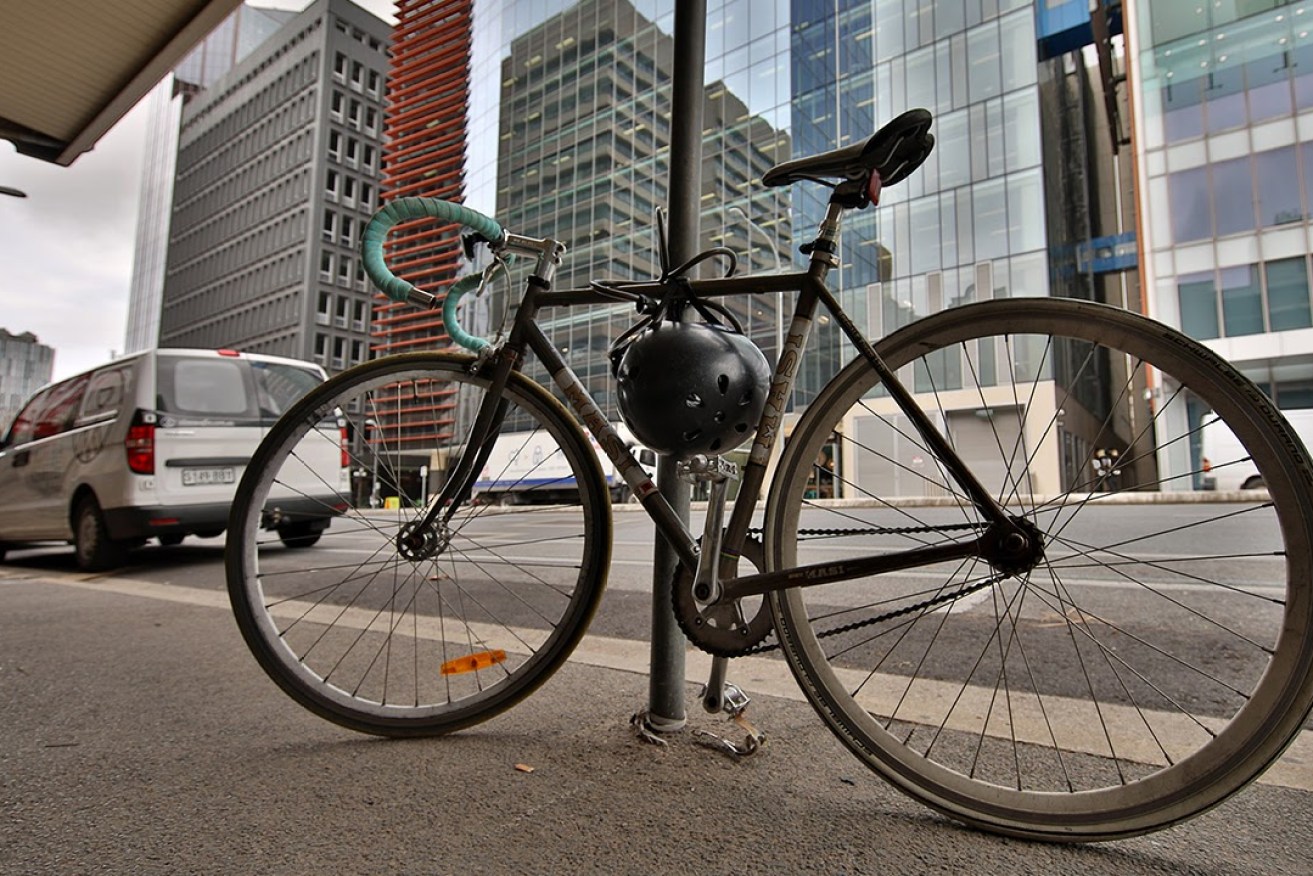Walking and cycling left at the kerb in SA’s next infrastructure plan
South Australia’s next 20-year infrastructure strategy needs to better recognise alternatives to car travel, critics argue.


Photo: Tony Lewis/InDaily
Walking and cycling receive few mentions in Infrastructure SA’s 64-page discussion paper on South Australia’s next 20-Year State Infrastructure Strategy, prompting concern from advocates of active transport who want to see Adelaide reduce its reliance on cars.
Last week, InDaily explored criticism of the paper from public transport advocates who argue it will not do enough to encourage public transport investment in the outer suburbs where the government is rezoning large swathes of land for new housing.
Scheduled for completion in late 2024, the 20-Year Strategy is intended to guide State Government infrastructure investments until 2045. The discussion paper is seeking feedback on questions like how to improve Adelaide’s public transport and decarbonise the infrastructure industry.
Infrastructure SA’s paper does tout the health benefits of public and active transport, saying it can contribute to “improved productivity and overall quality of life”.
“Walking and cycling also offer significant benefits for health and reduce greenhouse gas emissions from other forms of transport,” the paper states.
“Newer transport forms using micro-mobility technologies, such as e-scooters and e-bikes, also offer pollution-free convenience for movement.”
But the paper does not recognise walking as a “real alternative” for short distance travel, argues Sharon Kelsey, executive director of walking advocacy group Walking SA.
“The discussion paper disappointedly fails to recognise that walking needs to be a real alternative for short distance travel and be a priority part of a dual or multi-mode transport options,” Kelsey said.
“Whilst the paper sees walking has relevance for ‘cultural, tourism and recreation’ and acknowledges its green credentials, it fails to attribute its worth as a key element of liveability or as a necessary feature in the discussion of transport options.”
Just 2.04 per cent of Greater Adelaide commuters used active transport in 2021, according to data prepared for the discussion paper.
In contrast, 71 per cent chose cars to get to work – one of the highest proportions among Australia’s capital cities.
Kelsey said governments could “save millions in reduced health and congestion costs” if they “seriously invested” in walking as an alternative for short distance travel.
She said walking does not need to take a “dominant position” in the discussion “but it certainly needs to have a priority one”.
Infrastructure SA CEO Jeremy Conway told InDaily earlier this month that while Adelaide “is very much a car-based city”, infrastructure planners need to “find reasons for people to either shift to public transport or even a greater uptake of active transport”.
“I think that not only makes the network work more efficiently (but) improves liveability and helps address some of the decarbonisation objectives as well,” he said.
The transport sector accounted for 29 per cent of South Australia’s greenhouse gas emissions in 2021, according to Environment Department data – more than agriculture (28 per cent), manufacturing (23 per cent) and mining (16 per cent).
Road transport accounts for more than 80 per cent of South Australia’s transport emissions, according to Department data from 2018.
Infrastructure SA’s paper says transitioning to electric vehicles “will be key to achieving overall reductions” in South Australia’s emissions, given that public transport only accounts for a small portion of the state’s transport emissions.
But the paper also warns that the state’s electricity grid will be challenged by the shift to electric vehicles.
“AEMO (the Australian Energy Market Operator) expects the uptake of electric vehicles to increase electricity demand this decade,” the paper states.
“Planning for the increased load on the energy network, in addition to the deployment of public and private charging infrastructure will be critical for widespread electric vehicle adoption.”
Bike Adelaide chair David Elliott said active transport should be playing a bigger role in Adelaide’s future transport mix given the predicted electricity strain of electric vehicles.
“(The paper) does say… the transition to electric cars is expected to increase the strain on the electricity grid but doesn’t mention it won’t change the conditions for road maintenance or congestion, and then asks, ‘what are the major challenges to decarbonising transport?’,” Elliott said.
“It’s a bit absurd that they would leave out active transport in this frame as a solution, because it doesn’t need to be decarbonised, and therefore should be a bigger part of the discussion.
“It’s basically guided people to respond with car-centric response, namely we should build more chargers and more batteries, rather than inviting answers about how to reduce strain on energy resources as we transitions/decarbonise.”
Electric vehicles currently make up more than six per cent of all new South Australian car sales, according to the RAA.
The State Government is targeting all new car sales in South Australia to be electric vehicles by 2035.
Consultation on Infrastructure SA’s discussion paper ends on November 13.




